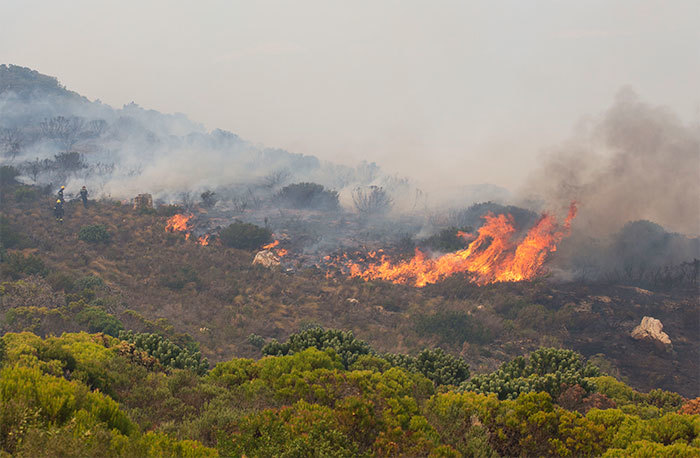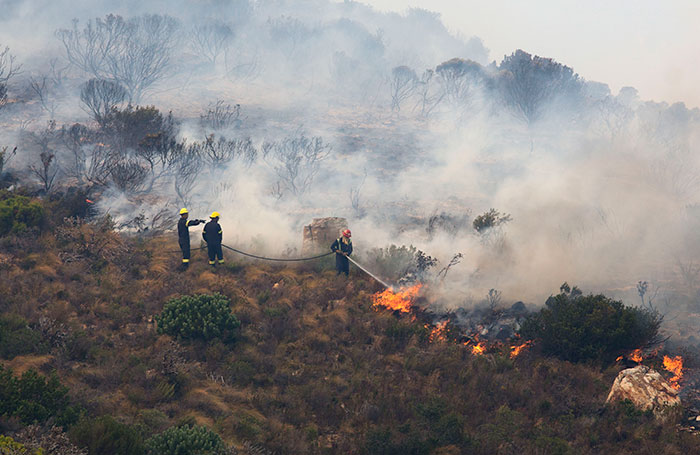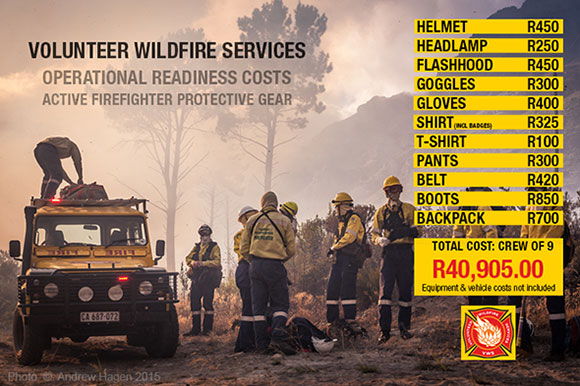Peninsula fires right on cue
04 March 2015 | Story by Newsroom
As devastating as the ongoing fires around the Peninsula have been to property and tracts of nature reserve, regular fires every 15 years are critical to the rebirth of fynbos-dominated ecosystems, says fynbos ecologist Dr Adam West.
"In the fynbos, fire is essential for maintaining the ecosystem and 15 years is an optimum time for fynbos to burn. In a sense, these fires are right on time; early enough to regenerate the plants that bind the soil before the winter rains erode the land."
Fynbos habitats have been burning every 15 years for between three and five million years, as long as fynbos has been around, adds West. "The native plants and animals from these systems are well adapted to these regular fires. If they couldn't handle it, there wouldn't be any left."
Without fire, these ecosystems slowly decay, negatively affecting the plants, birds and animals whose life cycles and food chains are inextricably bound to the fynbos. Ironically, it is the lack of fire that is the ultimate death sentence for fynbos ecosystems.
Good urban planning mitigates effects
And although the fires have razed some homes and buildings in the affected areas of Tokai, Noordhoek, Muizenberg and Hout Bay, West has commended the city's urban planners for the strict regulations that curtail development in the higher reaches of the Peninsula's mountains, which skirt some of the city's largest tracts of conservation park.
"Good urban planning can mitigate devastating fires like these. And Cape Town's urban planners have done a good job by keeping development below the natural plant line. This gives firefighters a fixed line to defend."
Unfortunately, developments like the luxury Tintswalo Atlantic lodge, which was razed to the ground below Chapman's Peak, are "time bombs" in a region prone to fynbos fires, he says.
"It's like building below the flood line of a river."
Vineyards planted right up to the natural vegetation on the mountains also stand to be damaged by these fires.
"Growing vineyards adjacent to a naturally fire-prone vegetation is inherently risky. We need to think longer term about this kind of encroachment."

Parallel message fires cricket squad
West is intrigued that the age-old relationship between proteas and fire has entered even the national sporting psyche.
The South African cricket team's inspirational Protea Fire campaign was adopted ahead of World Cup cricket, currently on in Australia and New Zealand. This is based on the knowledge that Protea flowers are adapted to survive ravaging veld fires, growing back stronger afterwards.
"But we need to get this conservation message out to the public," added West. "Though we want to save the tortoises and other small animals, they too ultimately need the fire for continued existence. Fire resets the ecosystem."
He strongly urges the public to get behind campaigns such as the Working for Water sustainability project, alien plant eradication programme, and enterprises that highlight the dangers of encroaching urban areas, all of which do far more to preserve our natural heritage in the long run.
Controlled fires
West would also like to see more managed burns; where controlled fires burn tracts of fynbos, limiting potential damage to surrounding areas and property. But these are being used less and less because of legal implications and penalisation.
"Now we're relying on arson or lightning to create fires at inopportune times when there's a heat wave and high winds.
"We must think about how we manage fires because they are critical."
If the 15-year fire cycle is anything to go by, planners and those involved in risk mitigation have until 2030 to fine-tune their thinking and plans.
Donate to the Volunteer Wildfire Services
Story by Helen Swingler. Photos by Nardus Engelbrecht.
 This work is licensed under a Creative Commons Attribution-NoDerivatives 4.0 International License.
This work is licensed under a Creative Commons Attribution-NoDerivatives 4.0 International License.
Please view the republishing articles page for more information.











